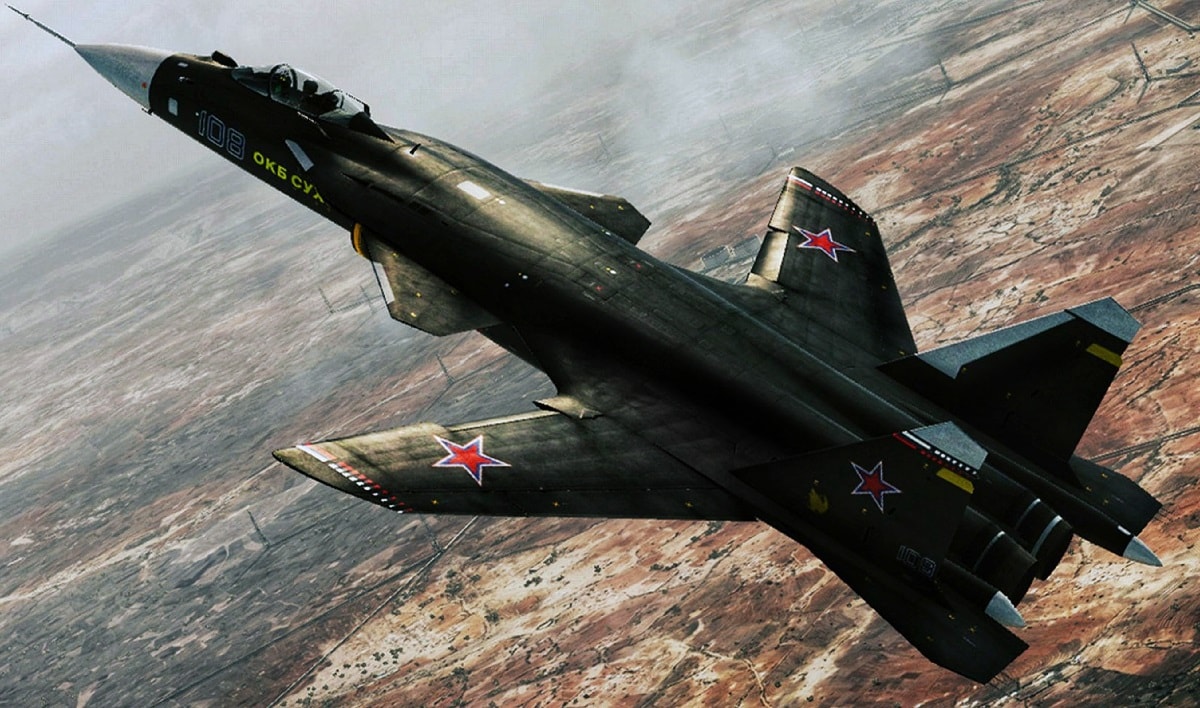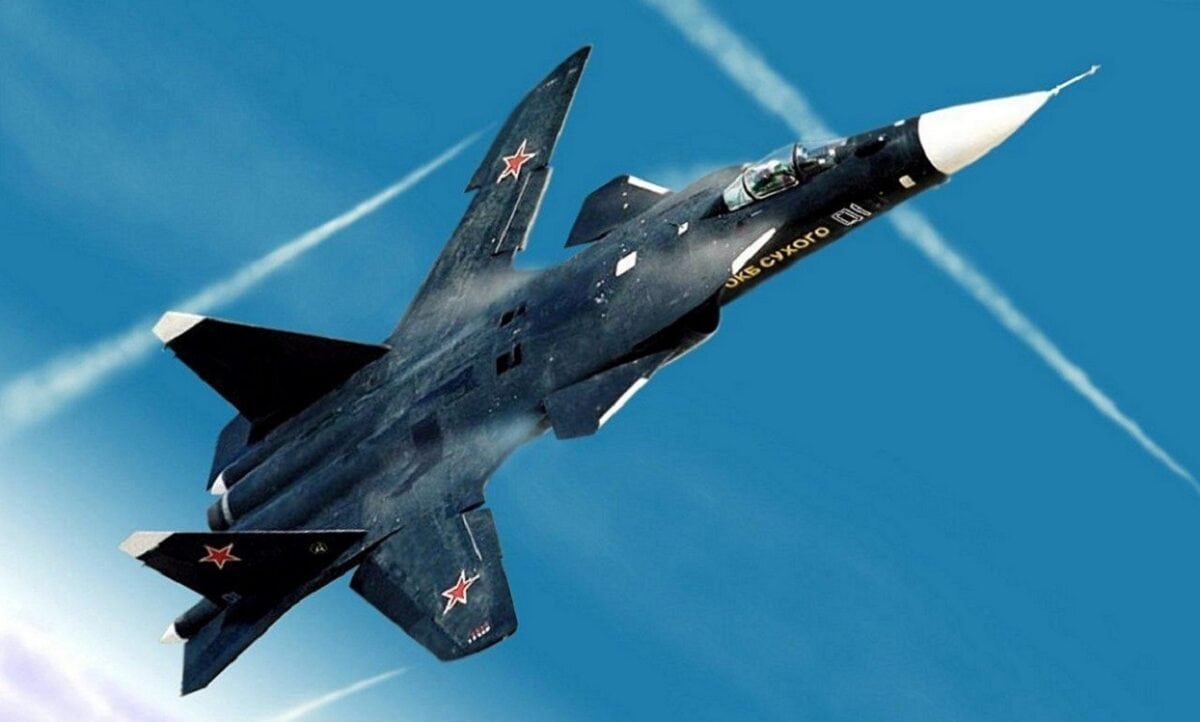Russia’s Su-47 ‘Berkut’ fighter jet, notable for its distinctive Reverse Sweep Wing design, is frequently referred to as the precursor of Russia’s 5th-generation Su-57 (Felon) stealth fighter jet.
But, Rostec, a state-owned defense conglomerate, has now disclosed that this fighter jet is helping the nation build unmanned aerial vehicles without giving any specific details.
The Berkut flew for the first time 25 years ago, in September 1997, when Sukhoi Design Bureau test pilot Igor Votintsev took to the skies in this aircraft. The Su-47 “Berkut” was first unveiled to the general public during the MAKS-1999 air show, where it performed a test flight.
This experimental fighter exemplified how things that appeared outlandish in the past are possible with modern materials. Only one aircraft was built and never made it to the assembly line. However, it provides a trove of critical data for Russian aviation engineers.
The colossal knowledge of the reverse sweep wing built of composite materials acquired during the Berkut tests is employed in developing unmanned aerial vehicles, according to a TASS report that details the development of the Su-47 fighter.
The swept-back wings reduce inductive drag, improving take-off and landing characteristics, maneuverability, and subsonic flying range. However, the report does not mention how much of that expertise was used in the development process of Russian drones.

It is believed that the building process of the Su-47 produced a wealth of knowledge that was very helpful for the Russian aviation industry in creating modern aircraft.
Berkut received a lot of attention from the media and western defense experts during its development. It was instantly dubbed the fighter of the twenty-first century, and reports of its planned mass production were extensively publicized.
“The Berkut was an experimental aircraft designed to work out the layout, technical and technological solutions as part of work on new generation fighters. Work on this topic began in the OKB [a closed institution that works on high technology design and prototyping, mainly for military purposes] under the conditional code S-22,” TASS noted.
The project was started in 1983 to produce an aircraft with a reverse sweep wing to modernize the Su-27 fighter jet for the USSR Air Force. At the same time, the USSR Navy searched for a new fighter to operate from an aircraft carrier.
The fighter was redesignated the Su-27 KM (ship modified), but development was halted following the Soviet Union’s disintegration. The fighter jet was referred to by several names throughout its development, including S-22, Su-27 KM, S-37, and ultimately Su-47.
The Use Of Composite Materials
The swept-back wings have several advantages; however, building such a wing is challenging since the entire structure can be shattered when certain flight speeds are attained.
The usage of composite materials enabled the attainment of high rigidity properties. Composite materials are now widely used in the manufacturing of airplanes. At the time, Berkut established the foundation for developing these technologies, which was a true milestone by 1990s standards.
Obninsk research and production enterprise Tekhnologiya (part of Rostec) was tasked with producing panels for Berkut’s reverse sweep wing. The panels used a novel material created by VIAM that outperformed the best in the 1980s in terms of performance.
“It’s been a challenging time. Factories were closed, and in general, the situation was difficult. And we received an order to manufacture a reverse sweep wing for the Su-47. This is a colossal experience that served as a breakthrough not only for aviation but also for our production,” recalled Alexander Konashenkov, operator of machines with program control of ORPE Technologiya.
“The method of the automated layout of products for aviation equipment was introduced, materials were brought to high quality, and for workers, it was an excellent practice,” he added.
Nevertheless, the aircraft was able to deploy a variety of innovative design and technical innovations that had never been applied to aircraft of this class before. This involves employing longitudinal static instability, designing large milling panels with double curvature, using composite materials in loaded airframe structure elements, etc.

However, reverse-sweep wings have some significant downsides. Aircraft with reverse-sweep wings have volatile flight characteristics. High speeds, mainly, put a lot of strain on the wings.
Due to the Su-47’s 18-ton additional weight from the weaponry, its G-load capacity was also constrained. And the cost of upkeep for this would have been astronomical. In addition, although it was incredibly adept at rapid turns, it had trouble keeping its momentum in lengthy turns.
The aircraft was anticipated to move at Mach 2; however, Berkut recorded the fastest speed at Mach 1.65. Meanwhile, only one Su-47 was spotted at airshows, which led some to suspect that the manufacturer was not entirely confident in the product.
Nevertheless, the plane significantly contributed to developing the Su-57, Russia’s fifth-generation fighter jet. The Su-47 also enabled Russian aircraft manufacturers to test various crucial concepts and gather information.
- Contact the author at ashishmichel@gmail.com
- Follow EurAsian Times on Google News





